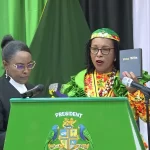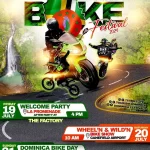Maroons of Dominica
Maroons of Dominica refers to the communities of formerly enslaved Africans who escaped from plantations and established free, self-sufficient societies in the rugged, mountainous interior of Dominica during the colonial era. These Maroons played a crucial role in the resistance against slavery and colonial rule, contributing significantly to the island’s history and cultural heritage.
Resistance and Legacy
The Maroons, also known as Neg Mawon, were led by several notable leaders, including Chief Jacko, Chief Balla, and Qwashi. They utilized Dominica’s dense forests and difficult terrain to evade capture and launch guerrilla attacks against colonial forces, effectively challenging and disrupting the colonial government’s operations. Their resistance was part of a broader Caribbean movement of Maroon communities that fought for regional freedom and autonomy.
Cultural and Social Impact
The legacy of the Maroons is commemorated through various monuments and cultural narratives in Dominica. A significant symbol of this legacy is the Neg Mawon Emancipation Monument, which honors the Maroons who fought for emancipation and the enslaved Africans who resisted oppression. This monument, located in Roseau, symbolizes the resilience and strength of the Maroon communities and serves as a reminder of their crucial role in the fight for freedom.
The influence of the Maroons extends beyond their historical resistance. Their contributions to Dominica’s cultural fabric are profound, particularly in music, language, cuisine, and traditional practices. Maroon heritage is celebrated in local festivals and cultural events, reflecting the enduring impact of their struggle on the island’s identity.
The Maroons of Dominica represent a significant chapter in the island’s history. Their bravery and determination in the face of oppression have left an indelible mark on Dominica’s cultural and historical landscape. Through monuments, cultural practices, and continued recognition, the legacy of the Maroons continues to inspire and shape Dominica’s identity.




